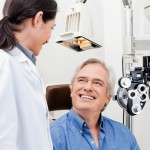 WellAdvantage’s Flu Shot Clinics are win-win, #FluProof propositions for employers and employees alike. Not only do these easy-to-administer clinics offer companies the opportunity to reduce absenteeism during the flu season and increase worker productivity, they are widely viewed by staff members as a valuable employee perk that demonstrates their employer’s concern for their health.
WellAdvantage’s Flu Shot Clinics are win-win, #FluProof propositions for employers and employees alike. Not only do these easy-to-administer clinics offer companies the opportunity to reduce absenteeism during the flu season and increase worker productivity, they are widely viewed by staff members as a valuable employee perk that demonstrates their employer’s concern for their health.
Most companies conduct Flu Shot Clinics in the fall before the onset of the flu season. WellAdvantage’s clinics may be an element of a company-wide health fair, part of an event to coincide with the open enrollment period for insurance plans, or simply a single-day opportunity to promote wellness among employees. Anyone attending one of our clinics quickly and easily receives the shot that will best protect them against the strain that is anticipated to be most prevalent in the upcoming flu season.
The WellAdvantage administration team works hand-in-hand with human resources personnel and insurance companies interested in holding a Flu Shot Clinic. A minimum of 20 participants is required. Information and release forms are provided in advance for employers that wish to streamline the process for workers.
Typically the hosting organization will designate an office or conference room space for the clinic and one staff member to help with registration – which may be by appointment or on a walk-in basis. A WellAdvantage nurse will administer shots to patients in a private or semi-private setting once the release form is executed. Typically the entire process takes less than 10 minutes and can be even faster when employees are provided the chance to pre-register and bring the release form with them.
The Centers for Disease Control (CDC) maintains a wealth of information on influenza and why flu shots are the public’s best way to keep the virus at bay during the winter months. The CDC also provides guidelines on who should consider a shot, what strains are being reported, and the symptoms that typically accompany a severe case of the flu. More information can be found at www.cdc.gov. Anyone who is unsure of whether or not they should get a flu shot should consult their physician.
Fall is just around the corner, so it’s a great time for your organization to make the #FluProof commitment by scheduling a WellAdvantage Flu Shot Clinic today. Just call 410.795.7579 or visit https://www.welladvantage.com/services/flu-shots/ to learn more.




















